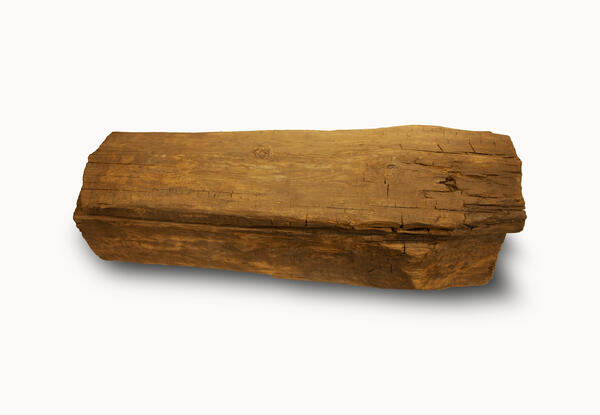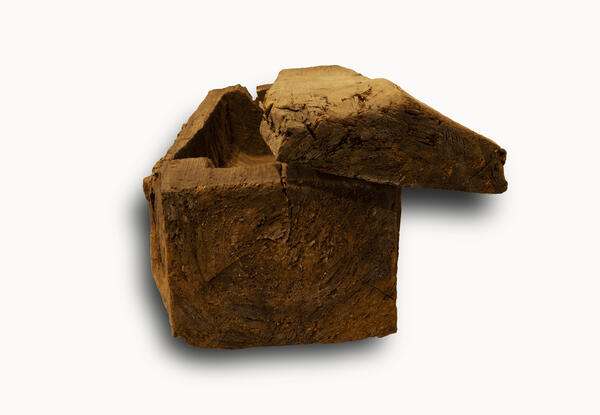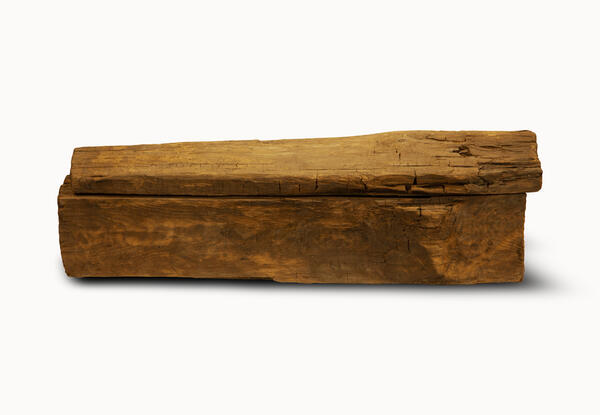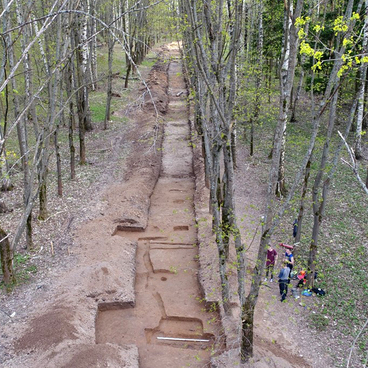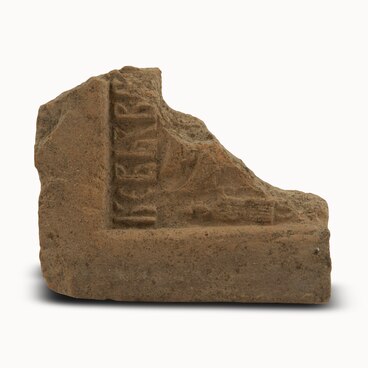Between 2017 and 2018, together with the restoration work of the Annunciation Cathedral complex of the 17th–19th centuries, some archaeological works were carried out as well. In a relatively small area, the researchers found over 200 burials belonging to different periods.
The researchers approximately dated the earliest of them to the 16th century, which preceded the construction of the stone cathedral. They also found tree-trunk coffins carved out of solid wood, as well as a variety of anthropological materials.
The good condition of the preserved remains can be explained by the high groundwater level and the lack of oxygen. The reason for this is that the top of the old cemetery was covered with a thick layer of woodchips that resulted from the active wooden construction in Gorokhovets in the 17th century.
The coffins from the burials were thoroughly studied. In burial No. 71, the remains of a woman aged about 25 years were found. The length of the body, which was deduced from the femoral length, was 160.6 cm.
On the teeth of the upper and lower jaws, the scientists found tartar deposits. Extensive carious lesions were observed on both of the first lower molars (that is, large grinding teeth). The condition of the dental system of the young woman from burial No. 71 indicates that she most likely had a poor state of health and impaired immunity and that she had a peculiar diet, which included viscous, non-solid foods.
The remains in burial No. 43 belonged to a child aged between 9 and 11 years. The complete skeleton has been preserved. Enamel hypoplasia is fixed on the child’s mandibular canines, indicating experienced adverse situations during the formation of those teeth (at the age of 6–7 years old).
In burial No. 120, the remains belong to a child under the age of six months. All segments of the skeleton have been preserved. All the skull bones and long bones of the arms and leg have indications of the periosteal reaction of the bone tissue, which, along with other signs, hints at vitamin deficiency.
In burial No. 183, the remains belong to a child aged between 9 and 18 months. The entire skeleton has been preserved. This child’s leg bones have an increased anterior-posterior curve, which may indicate that the child suffered from rickets (vitamin D deficiency).
The researchers approximately dated the earliest of them to the 16th century, which preceded the construction of the stone cathedral. They also found tree-trunk coffins carved out of solid wood, as well as a variety of anthropological materials.
The good condition of the preserved remains can be explained by the high groundwater level and the lack of oxygen. The reason for this is that the top of the old cemetery was covered with a thick layer of woodchips that resulted from the active wooden construction in Gorokhovets in the 17th century.
The coffins from the burials were thoroughly studied. In burial No. 71, the remains of a woman aged about 25 years were found. The length of the body, which was deduced from the femoral length, was 160.6 cm.
On the teeth of the upper and lower jaws, the scientists found tartar deposits. Extensive carious lesions were observed on both of the first lower molars (that is, large grinding teeth). The condition of the dental system of the young woman from burial No. 71 indicates that she most likely had a poor state of health and impaired immunity and that she had a peculiar diet, which included viscous, non-solid foods.
The remains in burial No. 43 belonged to a child aged between 9 and 11 years. The complete skeleton has been preserved. Enamel hypoplasia is fixed on the child’s mandibular canines, indicating experienced adverse situations during the formation of those teeth (at the age of 6–7 years old).
In burial No. 120, the remains belong to a child under the age of six months. All segments of the skeleton have been preserved. All the skull bones and long bones of the arms and leg have indications of the periosteal reaction of the bone tissue, which, along with other signs, hints at vitamin deficiency.
In burial No. 183, the remains belong to a child aged between 9 and 18 months. The entire skeleton has been preserved. This child’s leg bones have an increased anterior-posterior curve, which may indicate that the child suffered from rickets (vitamin D deficiency).


